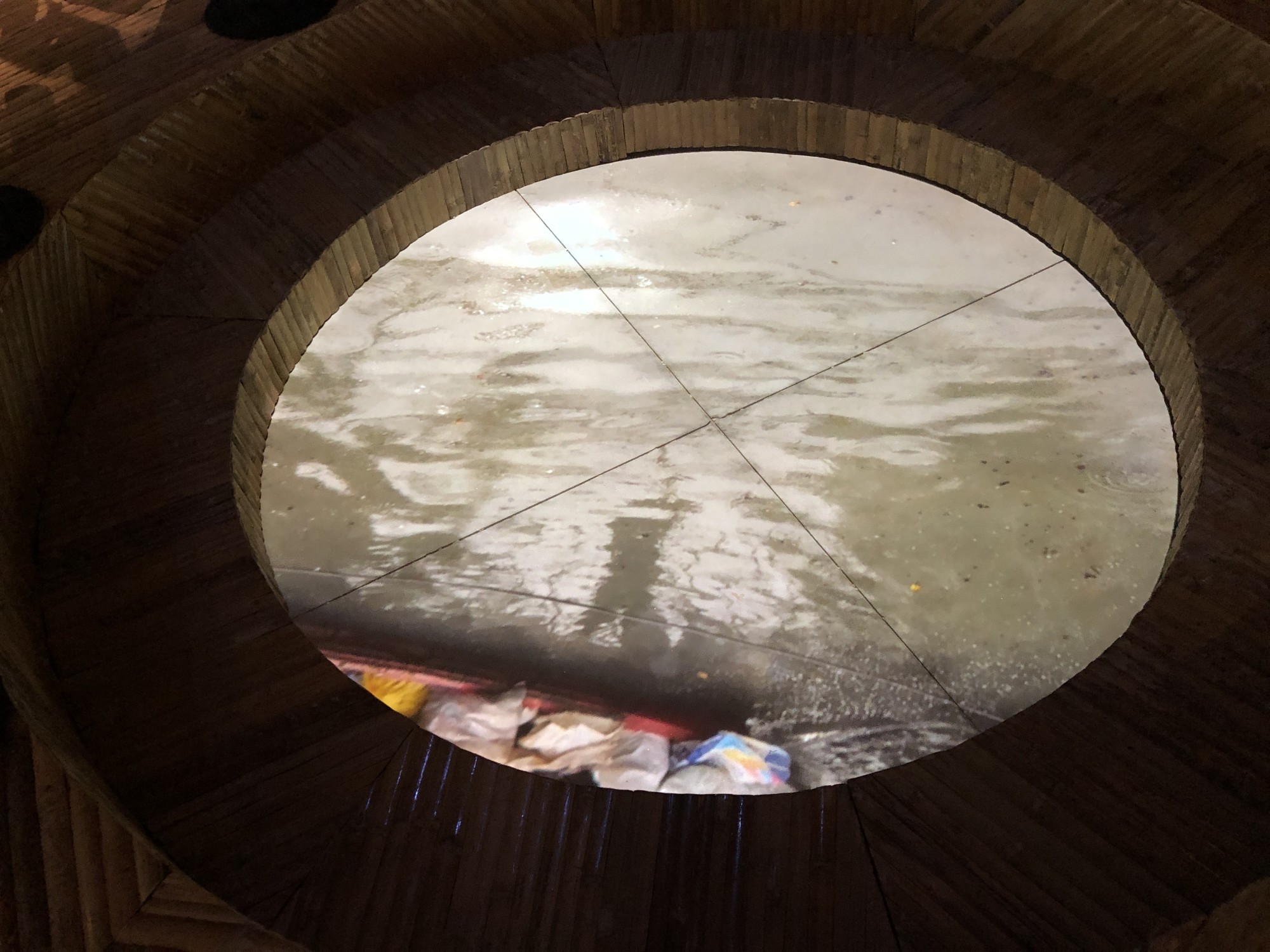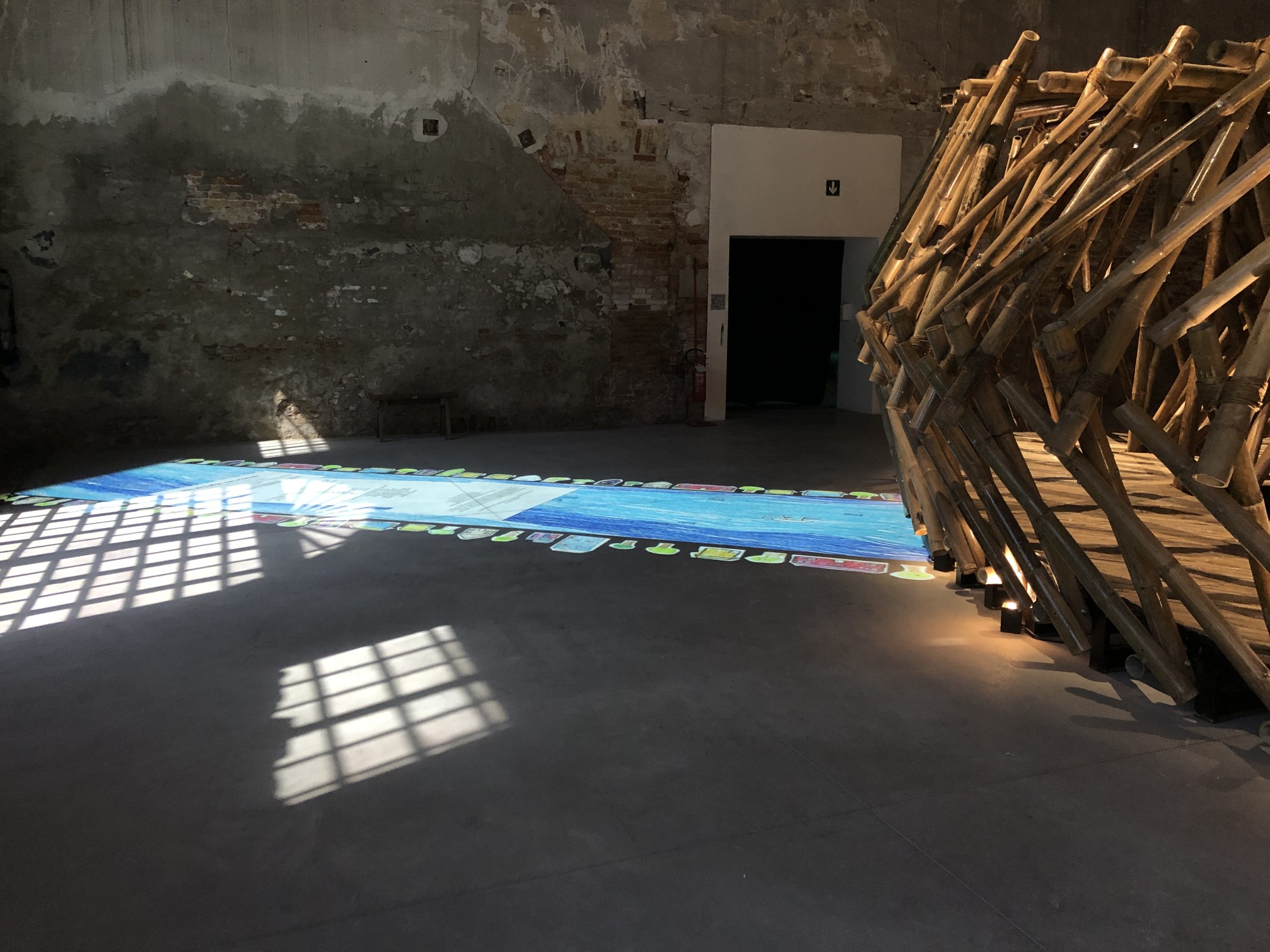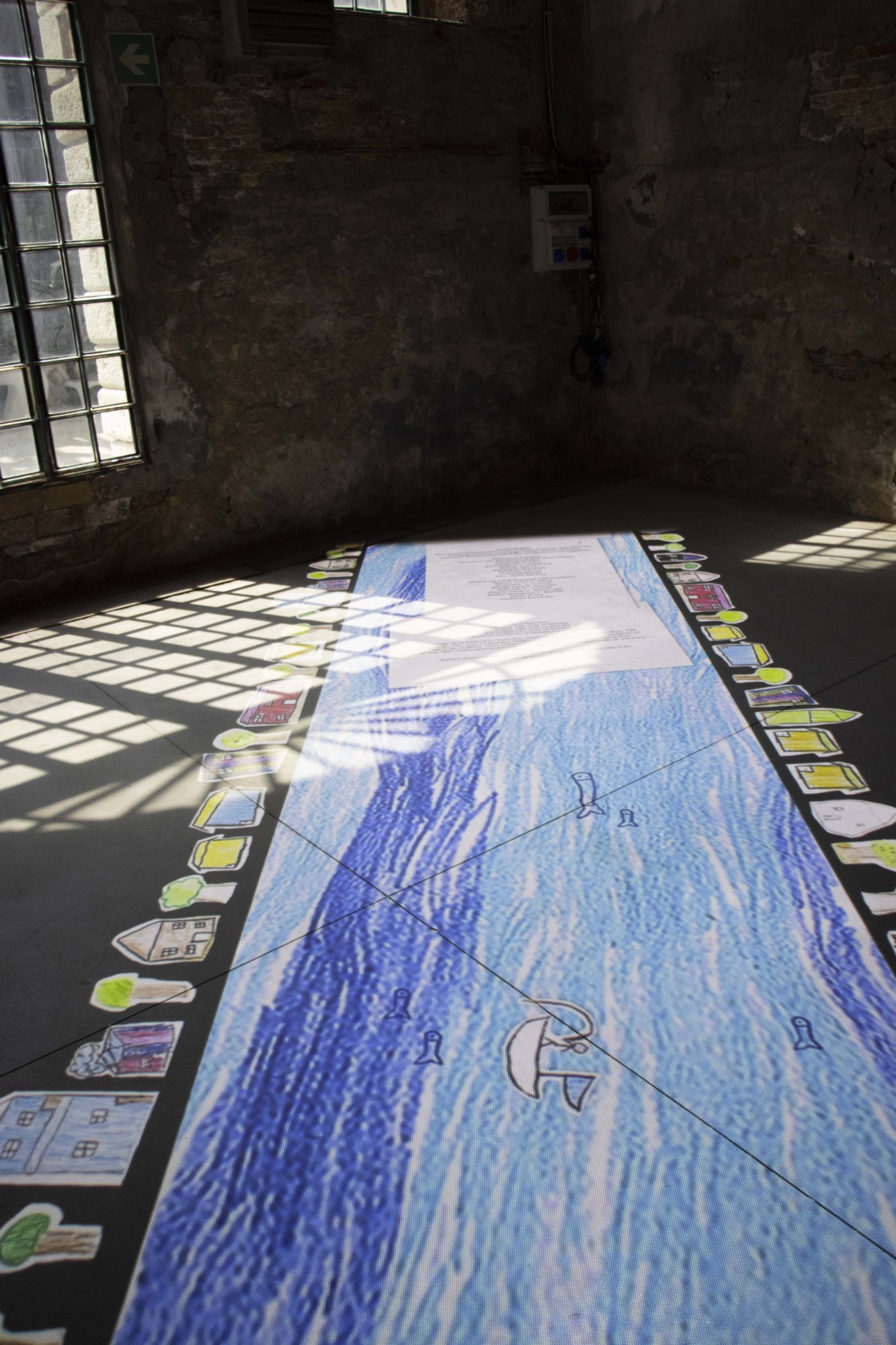Field Notes from the Pluriversity: Reflections on the 18th Venice Architecture Biennale
Capitalism Happened: In Media Res with Sam Domingo
Capitalism Happened: In Media Res with Sam Domingo
“...But just to make it a point that people are trying to live and trying to be alive in such a dead environment.”
SD: Sam Domingo/ AS: Aaron Smolar/ YKL: Yidan Karel Li/ KAP: Karla Andrea Perez
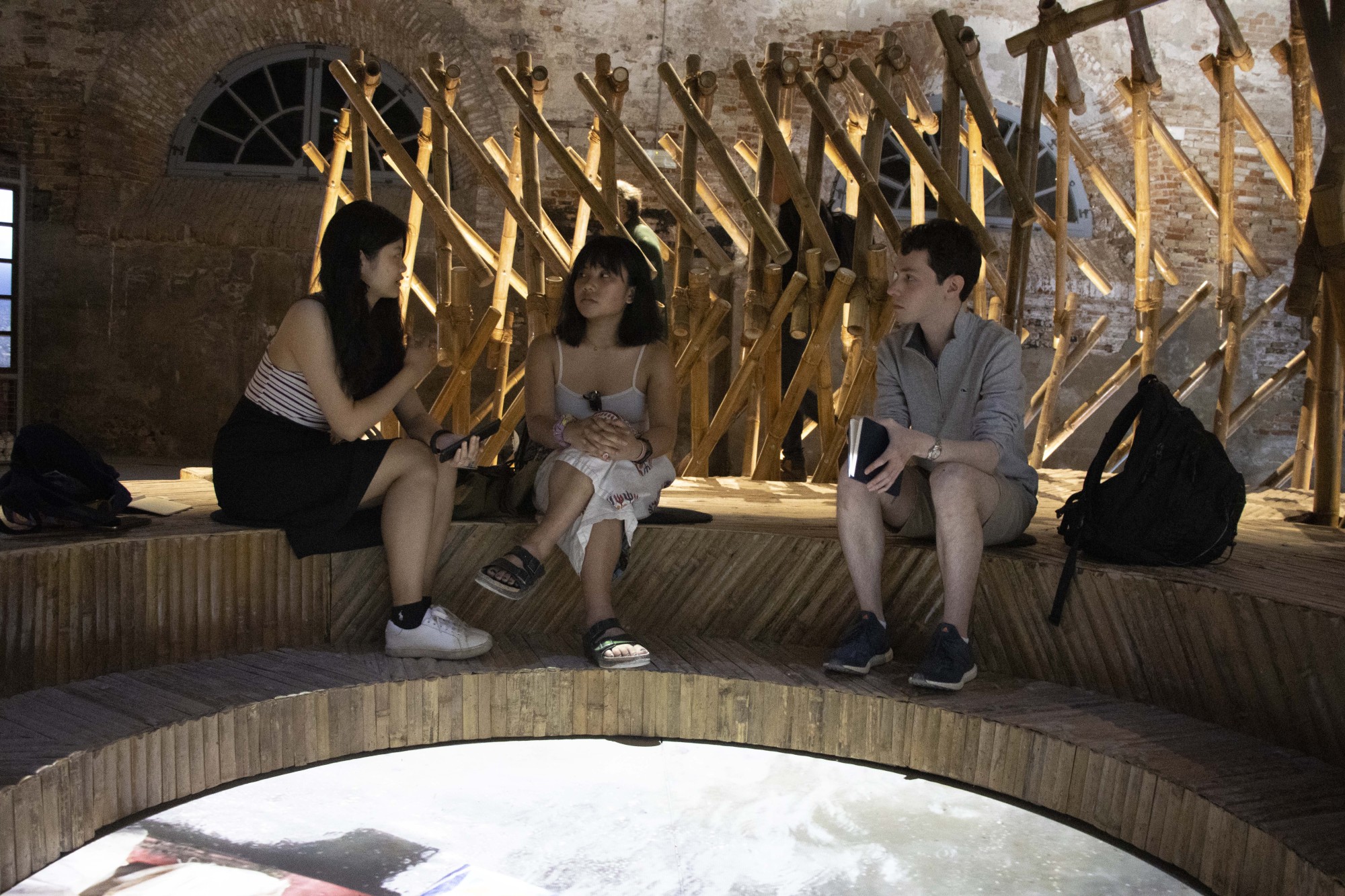
How is this struggle for life expressed in the pavilion’s structure?
We made it first before we did the exhibition layout. It works with the exhibition because it reorients visitors to the water. You know, there's a saying, “out of sight out of mind,” and back in the Spanish period—because we were colonized three times—there was a law, in which houses had to face the church. So the city follows a plaza-like urban design but turns its back on the water. When you do not orient yourself to the water, you don't know how valuable it is. Filipinos could have a very glorified and respectful relationship with water—one we still see with people coming from indigenous communities—but many Filipinos do not care for their environment because of the urban design. But that's only one of many reasons. The point is to reorient ourselves in water, to see it and just think, “how are we doing right now in this meditative space?”
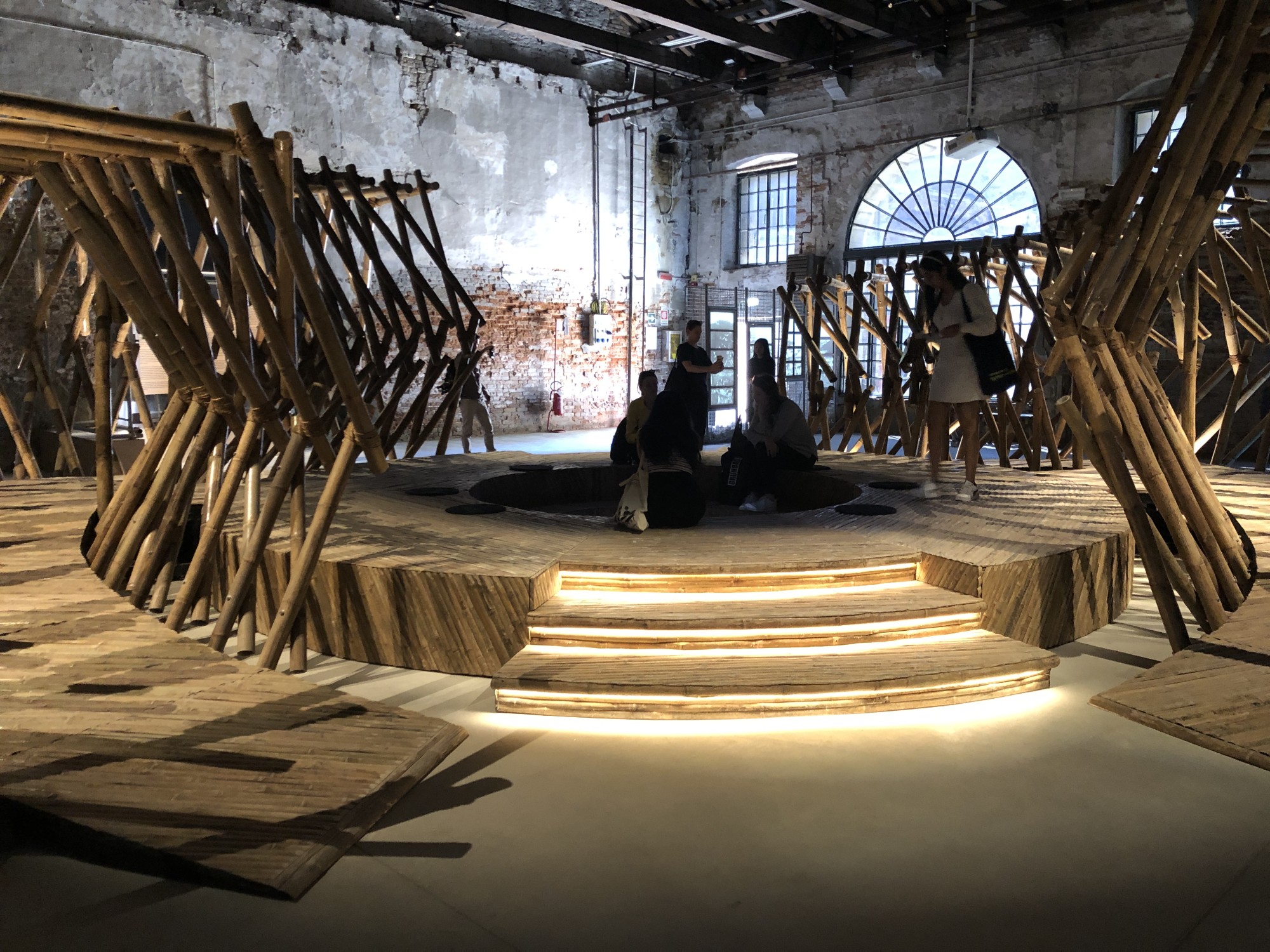
So this design is meant to reorient people towards the water, to place a spotlight on the water itself.
Actually we had many problems with lighting, too. Initially we wanted the pavilion to be illuminated so people can be invited to the space, because apart from orienting yourself to the water, you're also invited to gather here and just chill and sleep or play.
I'm interested in this dynamic that you talked about a little bit at the beginning between the typical European plaza urbanism versus a more surgical urban acupuncture strategy. When I think of connectivity, the first thing that comes to mind is a big open square where people can meet.
I'll give context first with Metro Manila. Metro Manila is so dense, one of the densest cities in the world. We don't even have many parks, we don't have green spaces. I mean, there are little patches, but they're like half a meter by half a meter. How can you play in such an environment? For example, the Mexican pavilion, for me, was Filipino-coded because the basketball space also serves as a public space for us. Because again, we don't have green spaces. We make use of the basketball court the same way Mexicans do. We hold festivities there, we host our pageants there, we hold political meetings there. That's also why there are a lot of malls in Metro Manila; it’s the closest thing we have to public space. That's crazy to me! We need something that lets us breathe and lets us connect with the environment. That’s also a main point of this exhibit: If you're not caring for your environment, if you don't have any affiliation to your environment, then your life will deteriorate. So, what I mean to say is, it's a gesture toward a public space created by acupuncture.
But, it could also be a garden. For this one, we specified it as a public space because that's what the community needs so far, but it's not only a gathering space. In our catalog, we invited a botanist to also teach the community how to turn it into a garden, how to grow their own plants, and how to also access bamboo. Whenever they need to repair it, bamboo will be there, so it’s also sustainable.
It’s all about localized ideas, concepts, and materials being intentionally inserted into the metropolis.
Exactly. This can be anything the people want it to be. We're just there to build it with them.
Part of the work you did with the community was with children. Can you talk about their involvement with the creation of the river animation playing on the floor?
We wanted to avoid being read as another Global South sob story. We didn’t want to be “poverty porn.” We wanted to make this approachable, not to scare people out of pity, but to foreground this community. The core of this exhibit is the community. We did focus group discussions and interviews, and we were careful not to be intrusive. In fact, we vibed with the people and we all had fun. We have lots of interviews and raw footage, but we squeezed it into ten minutes. Most of them are the adults, the long-time residents of the communities, and then the kids. We wanted to centralize their agency, too, especially because they’re rarely attended to. At the end of the day, they are the ones who are going to live in the future, and they should have a say in that future. Since they've only lived for a few years, maybe they're the best ones to articulate that future, unencumbered by experience. And that's the only prompt we gave them: What do you want for the future of your community? We had them do sketches, and we collected all those drawings. They're so colorful, they're so cute! I was struck by the houses [they drew], the beautiful houses, the colorful houses, the greenery that they want. And then I thought, maybe we should use these for the river animation, and then make the river flow. They're talking about their frustrations but also imagining the future that they want. So that's why the river also goes through the structure.
And personally, it makes me frustrated because if this is the future that the kids want, like just red houses and this feeling of freedom with places to play…why are we not doing it? It's just so simple.
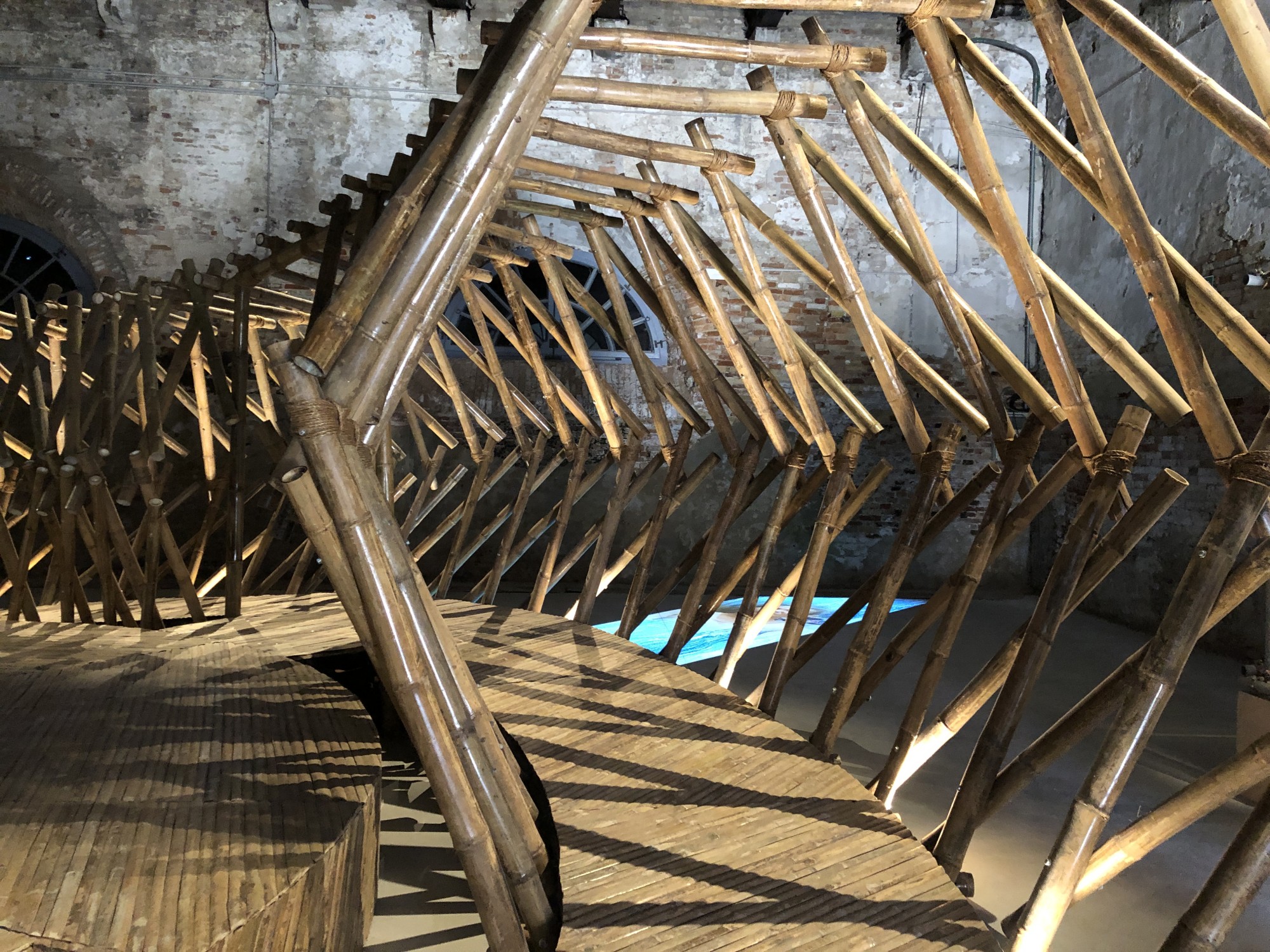
I’d like to shift gears again and ask, how has this exhibition, with all of its moving parts, shaped your curatorial practice?
Well, I've done curatorial exhibitions, both still and moving image type of exhibitions, but they’re almost always all community-based.One challenge was the projection, and you cannot do it alone. Without projection mapping, you would see the limits of your video. So it taught me how to negotiate the back and forth between the videographer and the technical team, because they need to always resize this or that, or make the quality of the video better. I think new technologies are really important to know as curators. Like here, with the main exhibition, they projected it on sand, on fabric, on glass, etc. It's also important to know how the sound interacts with the space; do you want it to be isolated or do you want it to spread out? We wanted some moments to be isolated because it's like an intimate moment with the water, while for other moments we wanted it to be audible from other positions.
And then, of course, we had to deal with these huge windows and the Venetian sun. It involved a lot of testing to get the projection correct. We added these windows to help with that, but they also became an invitation to the audience to take peeks inside, and that became another moment of connection. They shout at each other, like, Hoi! Morning! Secondly, these windows became metaphors, glimpses of history, and we're literally showing history alongside what's currently happening. So we invite the audience to have a peek on what's happening in the Philippines through these windows.
So these are all urban elements, parts of the urban patterns that were abstracted to be reformed.
Yes. Each element signifies a certain aspect of time. The past is represented in the archival notes from the three periods of colonization. The present would be this grounding and the projections. And the future would be this bamboo structure. And so again, we aimed to show how people respected water, before capitalism happened. It’s like, Look! Capitalism happened!
